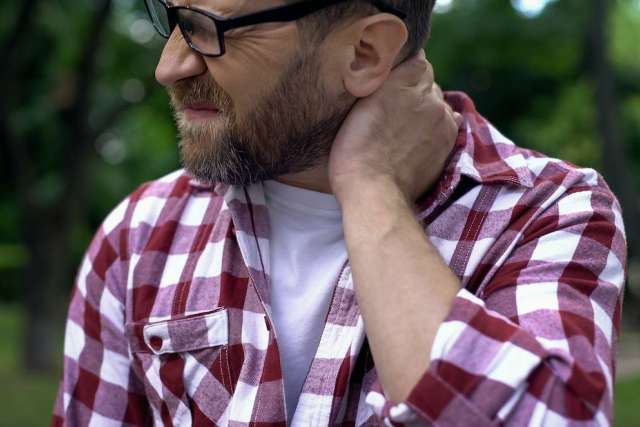Migraine afflicts more than 39 million people in the United States, yet much of the biology behind this disabling condition remains poorly understood. Most of us think of migraine as a type of headache, and indeed, the intense pain associated with migraine can send sufferers to hide in a dark, quiet room for a day or two. But a throbbing head is only part of the story.
Migraine is a complex neurological disorder that comes with a wide variety of symptoms. Some non-headache symptoms, like nausea and the visual disruptions known as “auras,” are already associated with migraine, but researchers are still documenting new migraine symptoms.
To better understand how migraines arise, and potentially develop more effective prevention and treatment, it’s important to see the whole picture, says migraine expert Peter Goadsby, MD, PhD, DSc, professor of neurology at the David Geffen School of Medicine at UCLA.
In a review article for Practical Neurology, entitled “Migraine: Beyond Pain,” Dr. Goadsby details other, less well-known symptoms that have turned out to be linked to migraine. These symptoms include:
- Food cravings
- Neck stiffness
- Sensitivity to light and/or sound
- Brain fog
- Extreme fatigue
- Increased urine production
- Frequent yawning
Often, people don’t report these symptoms when seeking migraine treatment, because they may not realize the symptoms are linked to the headache.
“If you don’t ask people about these symptoms, they won’t necessarily tell you, because why would they?” says Dr. Goadsby. “If you went to see a neurologist about a headache, urine is not the first thing you’d think of bringing up. It wouldn’t even be top ten.”
Yet these symptoms can help researchers get a clearer picture of migraine’s origins in the brain. “One of the brain areas that’s active in the early phase of migraine is the hypothalamus,” Dr. Goadsby explains. “The hypothalamus is involved in fluid regulation. When you say that, then it isn’t surprising to see that symptom (of increased urine production).”
Similarly, cravings for sweet treats or savory snacks arise in the hypothalamus as well. The pea-sized brain structure regulates appetite and controls the release of chemicals related to feelings of satiety or hunger.
While food cravings aren’t the most common symptom, they can have a big influence on how a person experiences their migraine, Dr. Goadsby says. “There’s a very popular myth about chocolate causing migraines,” he says. “But anytime that’s been studied, it falls to pieces.”
Rather than the chocolate triggering the headache, he says, the desire to eat chocolate could be an early symptom of the migraine. “Patients will say, ‘I didn’t eat chocolate, and it didn’t make any difference.’ That’s because the process has already started, and you can’t make a difference.”
Another case where the cause-and-effect relationship gets blurred is neck pain, one of the most commonly reported symptoms. “Very many people think they have headaches because they have neck problems, and they go see a chiropractor,” Dr. Goadsby says. “Well, most 30-year-old women don’t have neck problems. What you’re seeing is the warning phase developing before the headache.”
When migraine sufferers record their symptoms leading up to the headache, he says, 90% will report neck stiffness or pain. But these connections only become apparent when doctors know to ask the question. “If you don’t ask, very often it’s missed,” Dr. Goadsby says.
While these symptoms aren’t as distressing as the pain of migraine, understanding them could help improve patient quality of life. “These symptoms that occur give us insights, both into what’s going on biologically and to neurochemical systems we might want to explore,” says Dr. Goadsby. “It doesn’t alter treatment at the moment, but it gives people information. It can be a bit of a warning.
“If you know these symptoms happen in the day or two before (a headache), and you get them on Wednesday or Thursday, going into the weekend without your medications in the cabinet would not be a good strategy.”
Learn more about the UCLA Goldberg Migraine Program.
Caroline Seydel is the author of this article.




